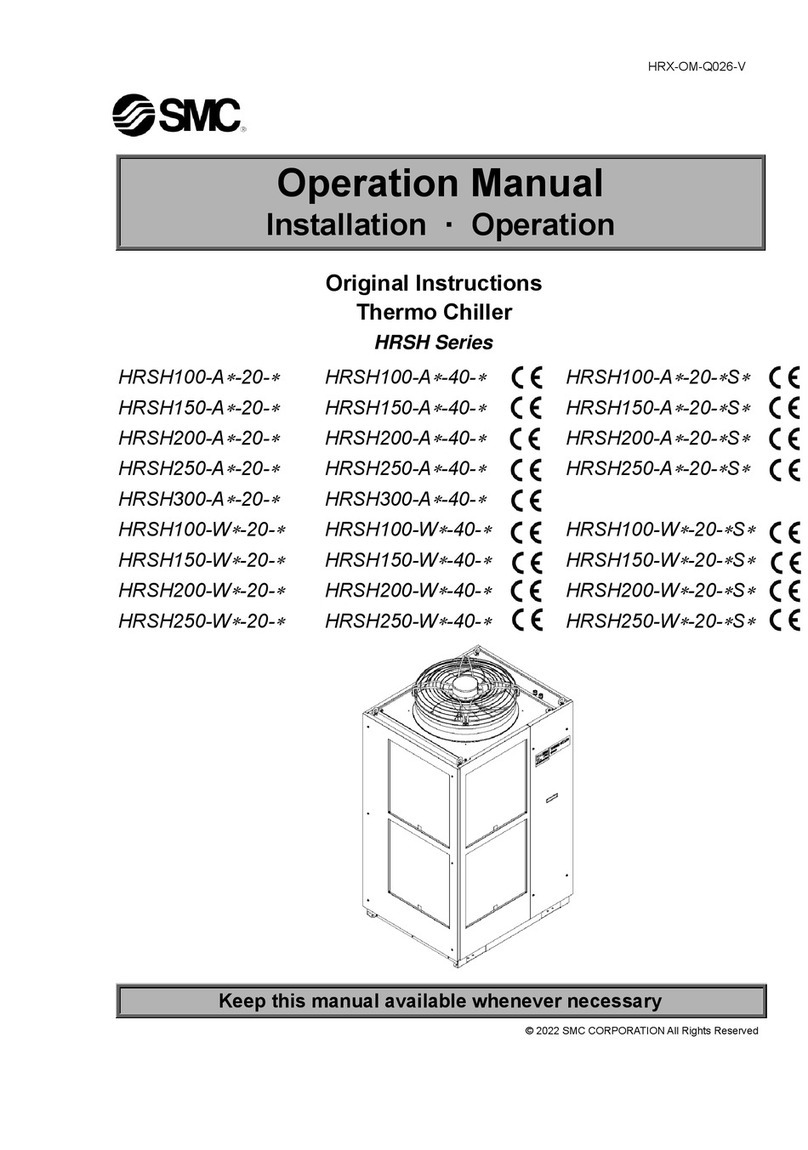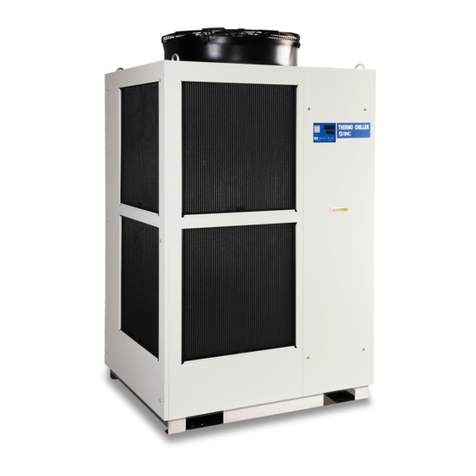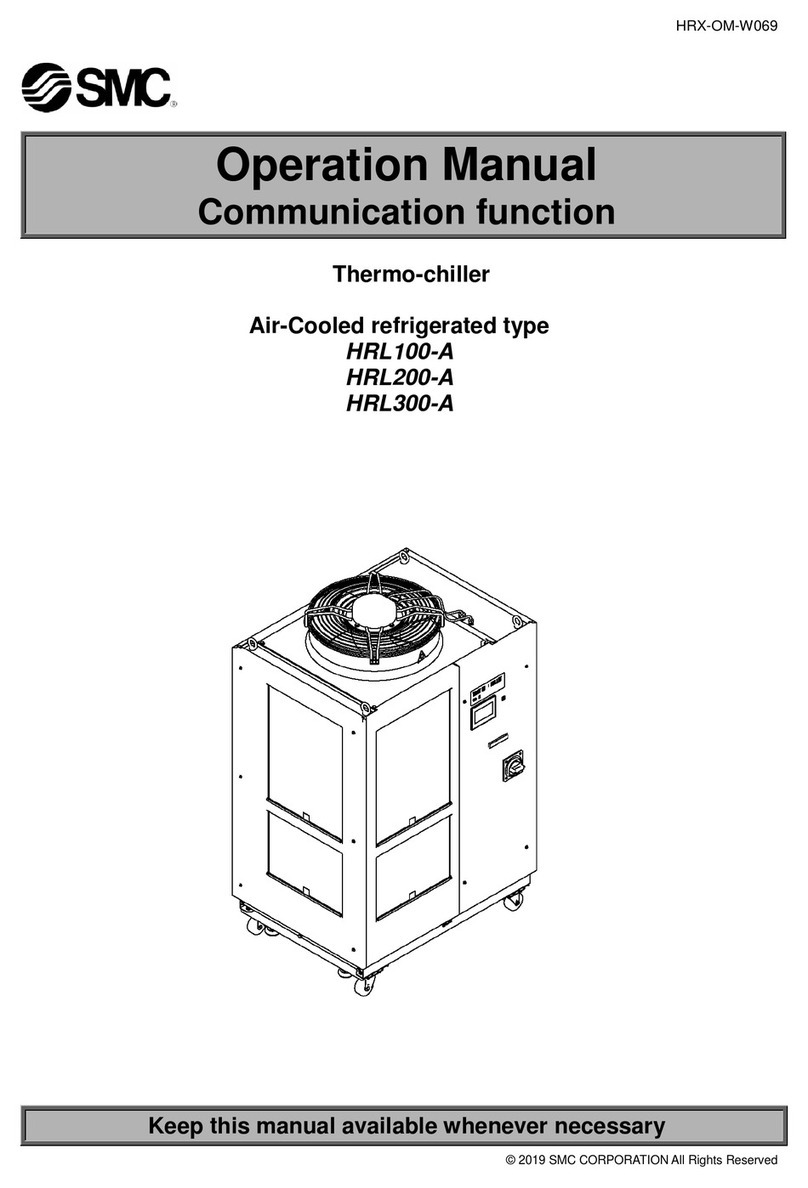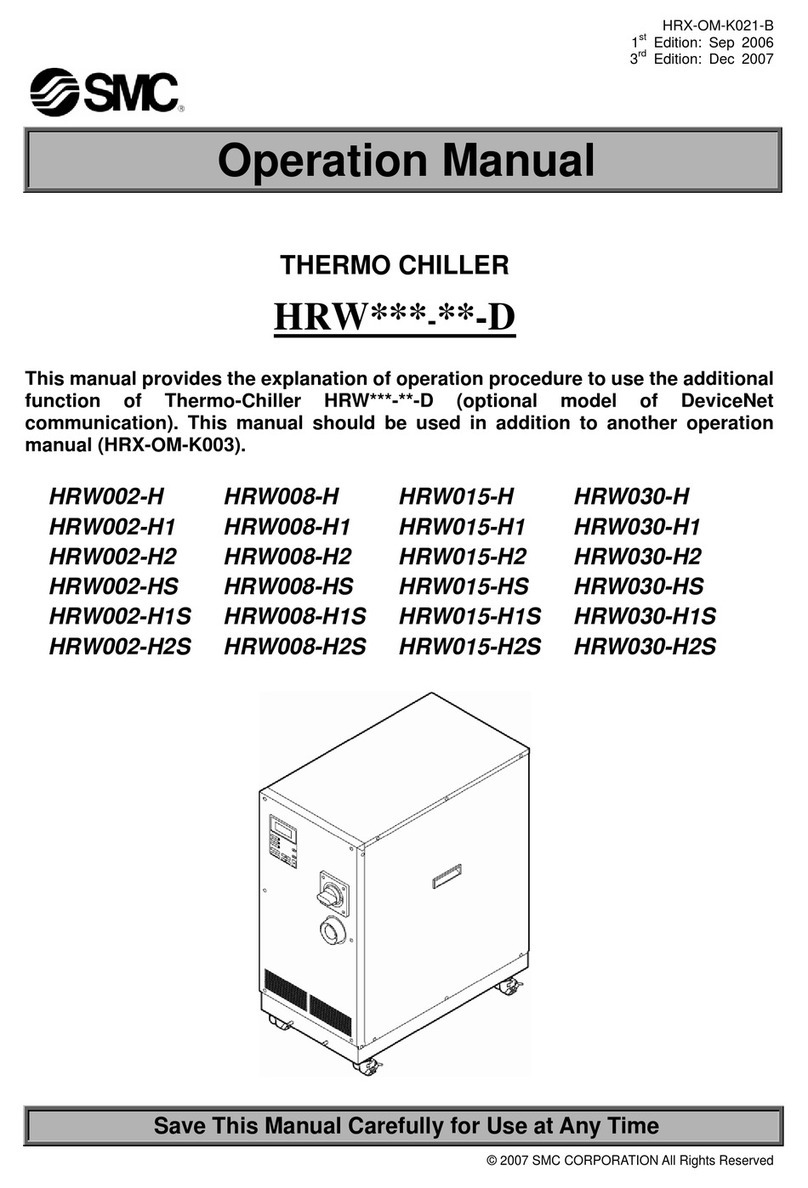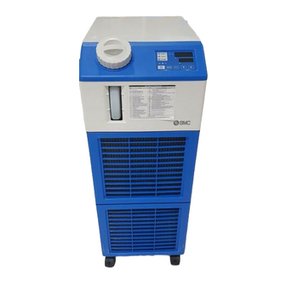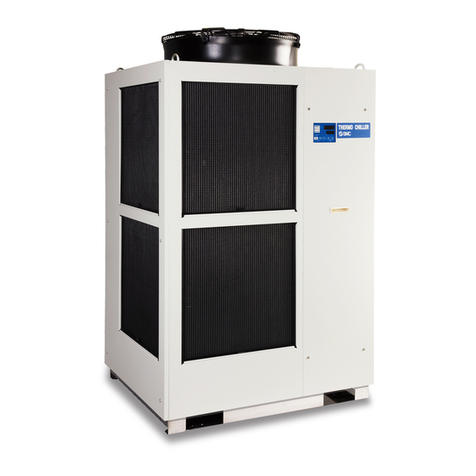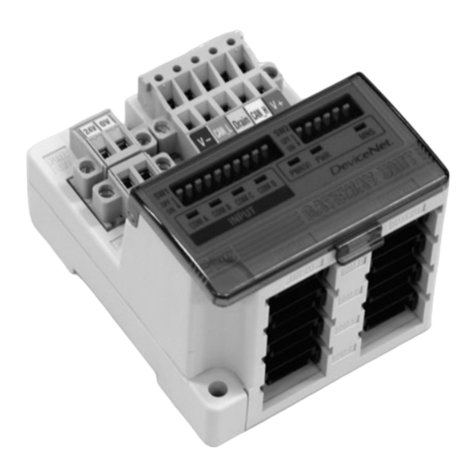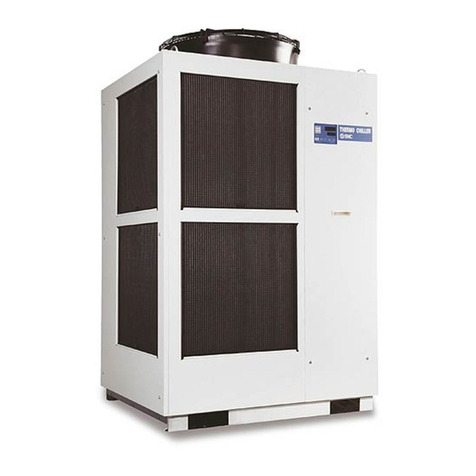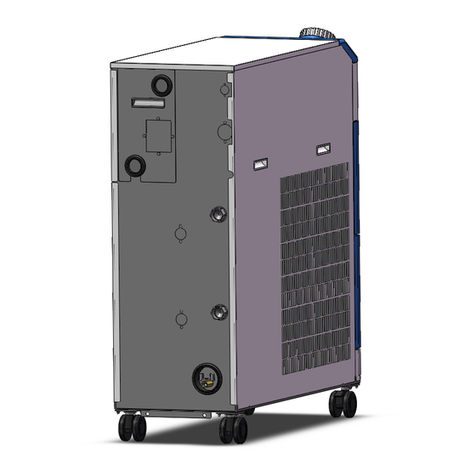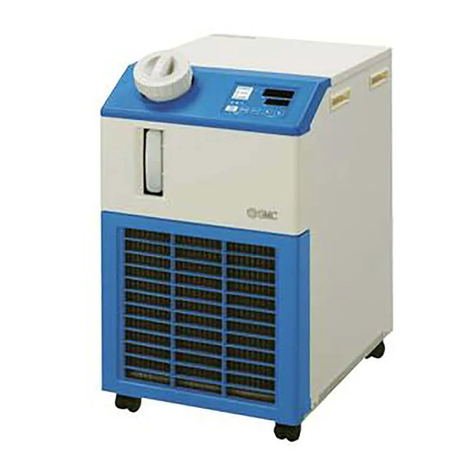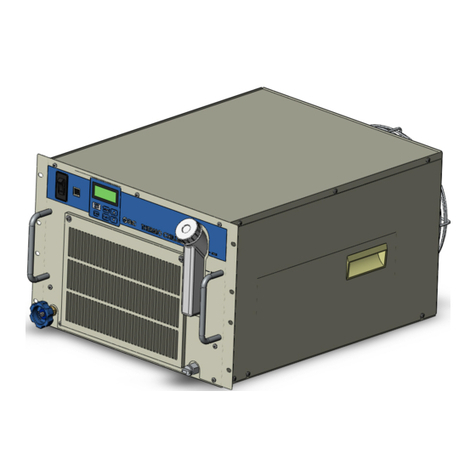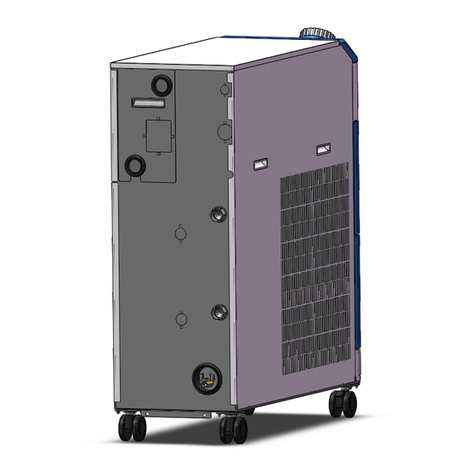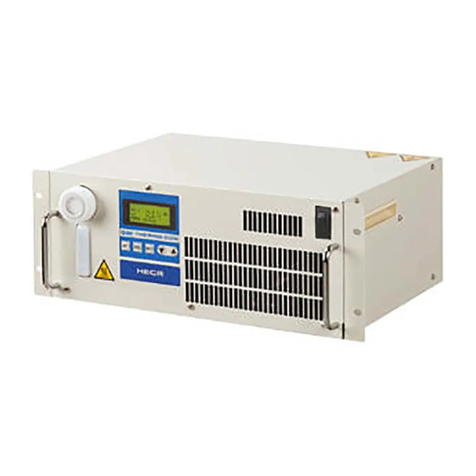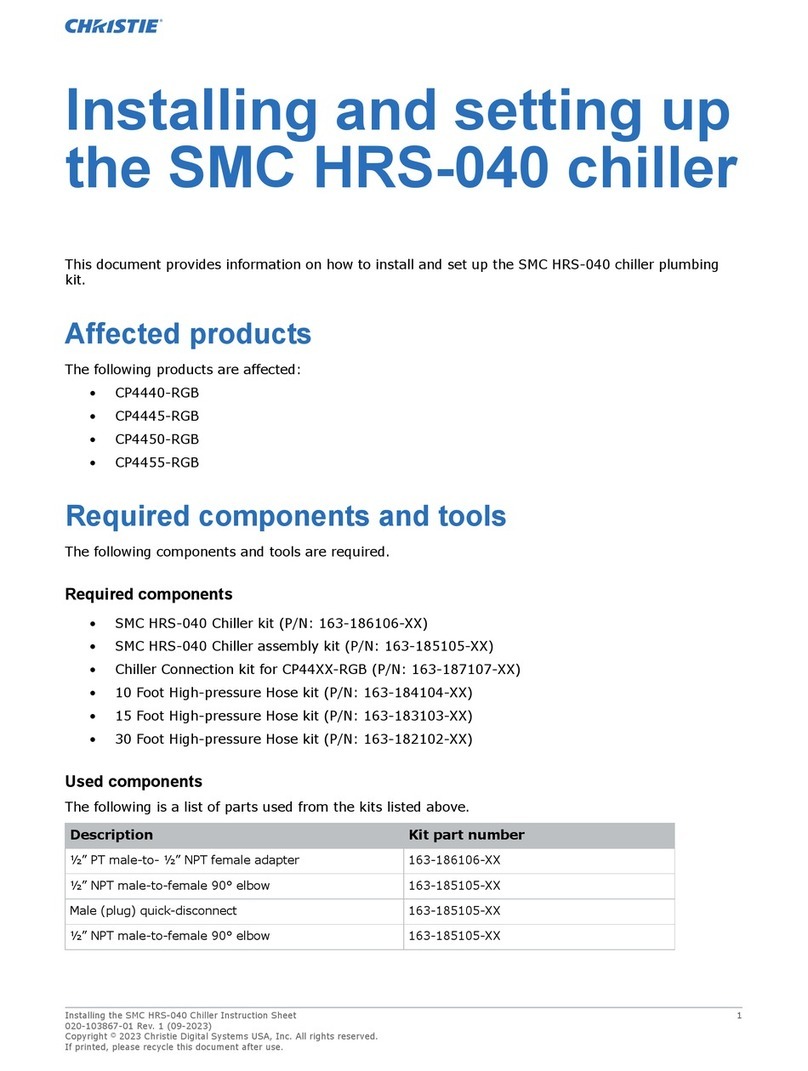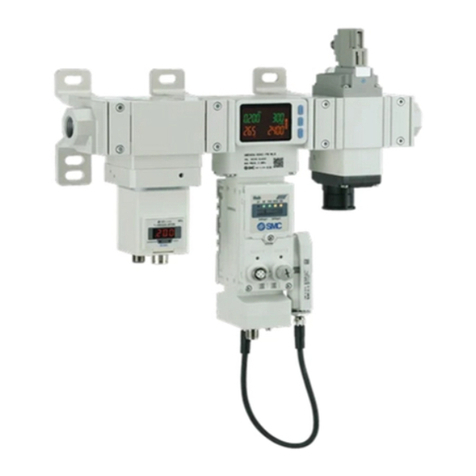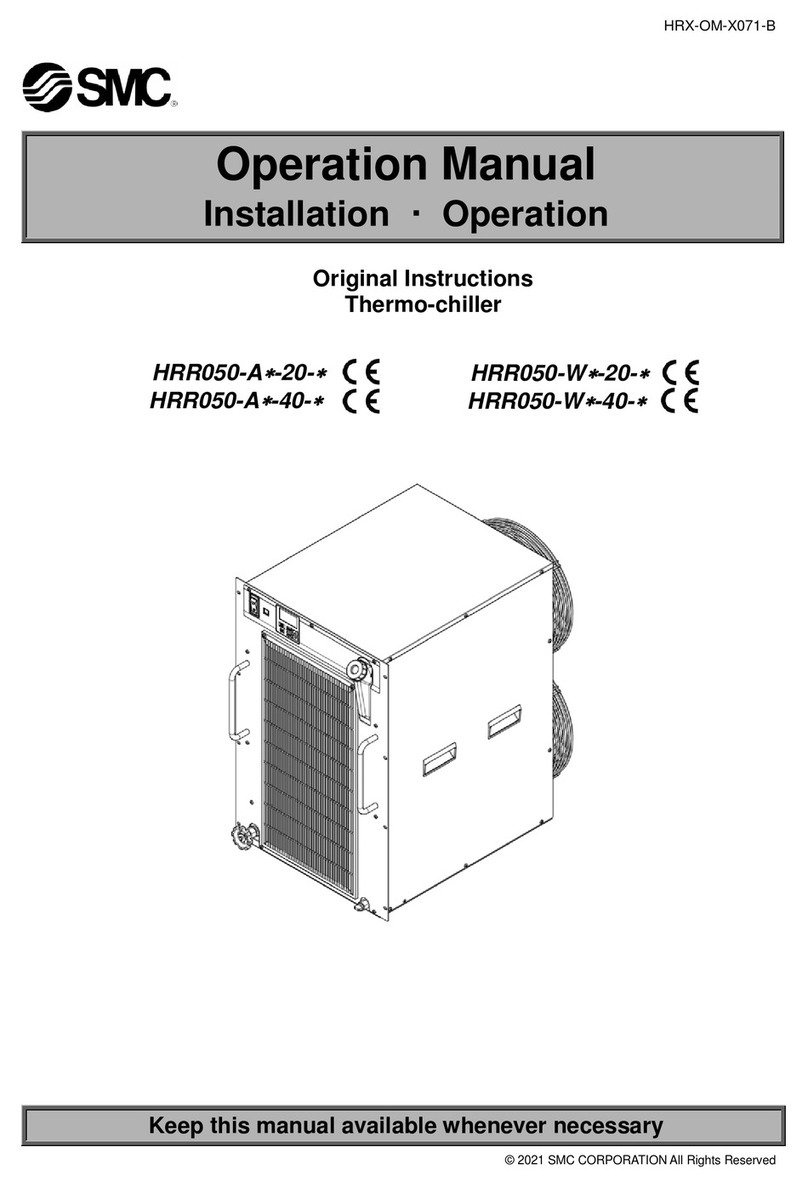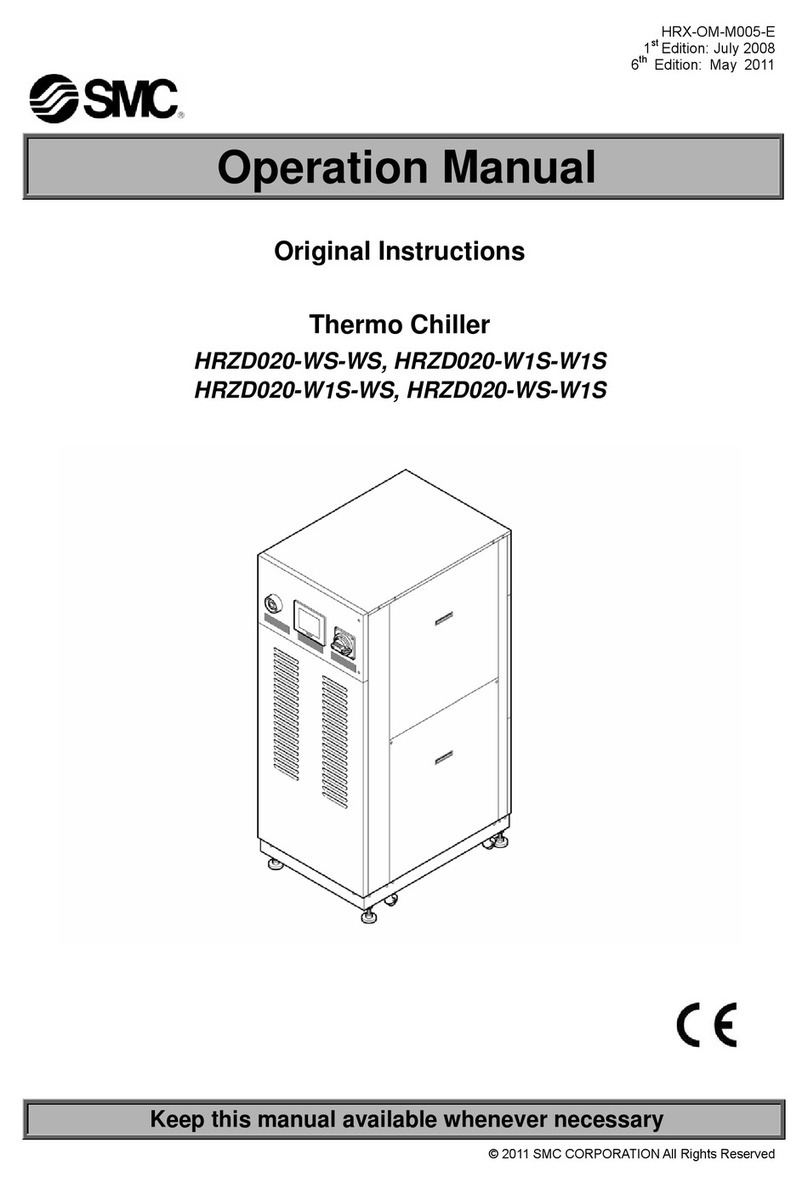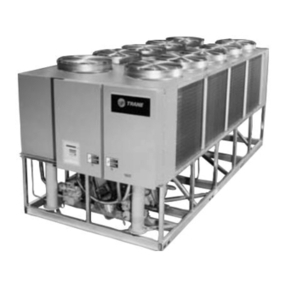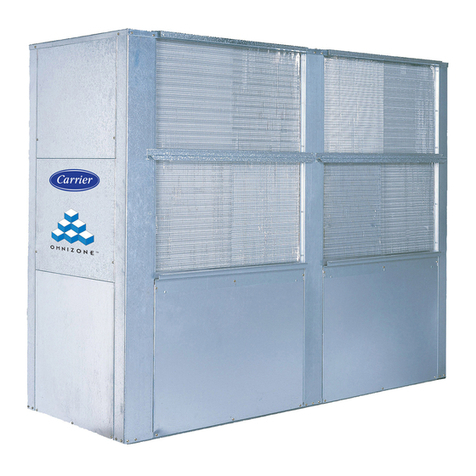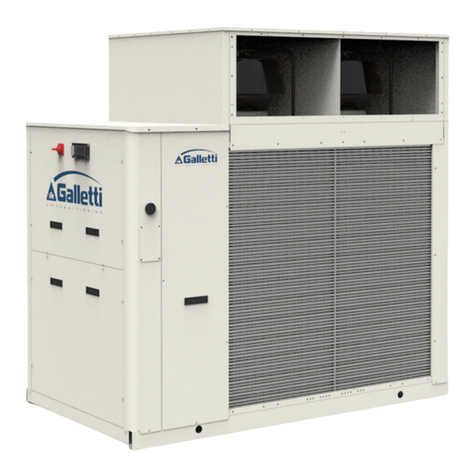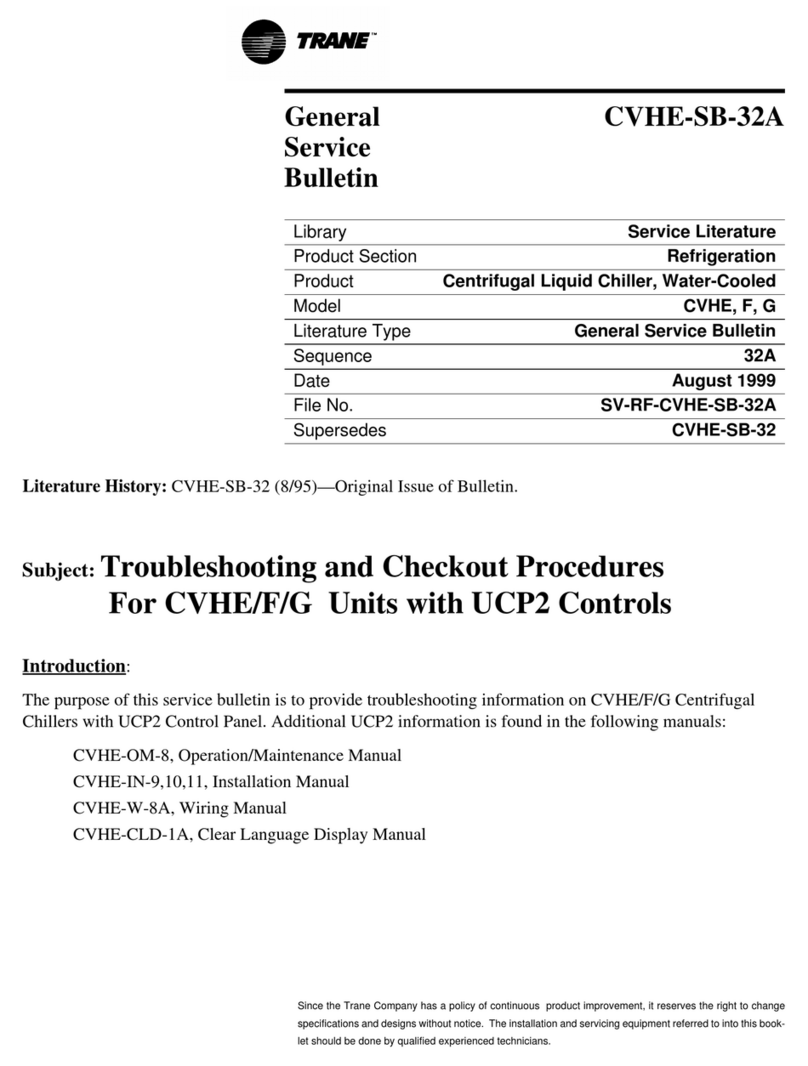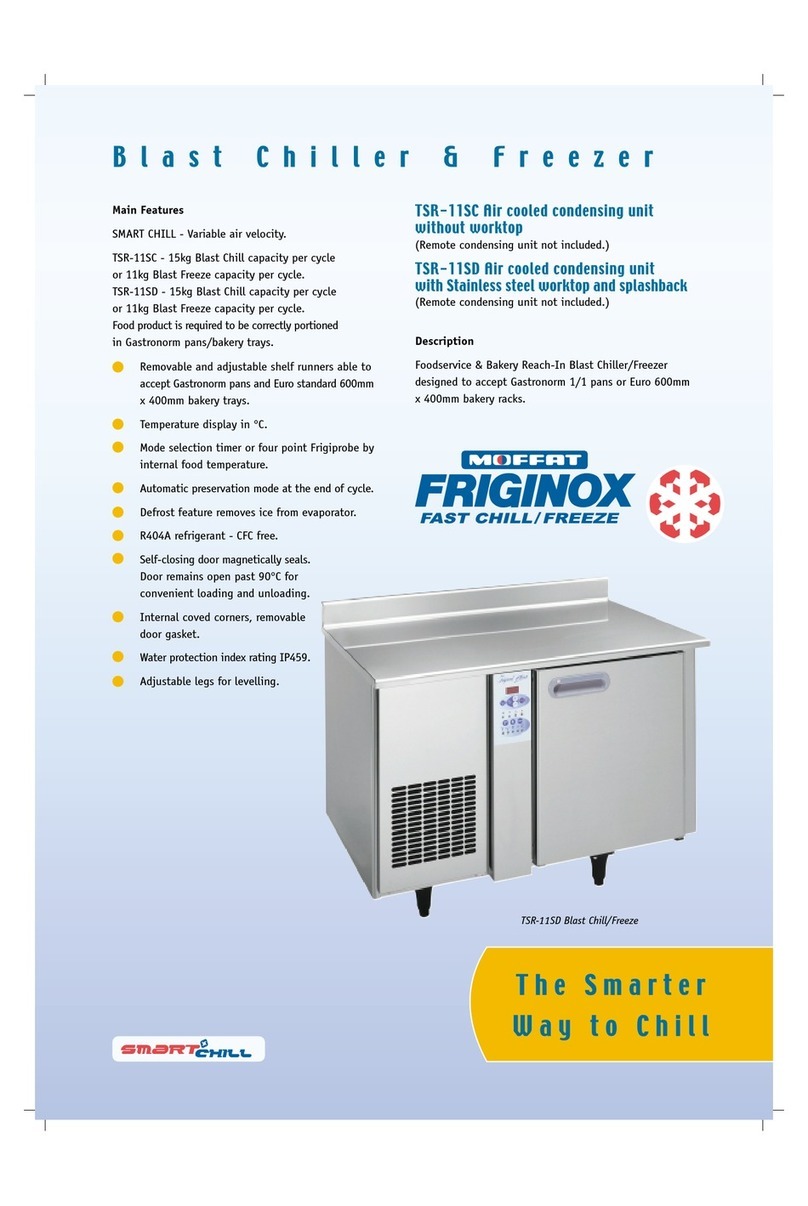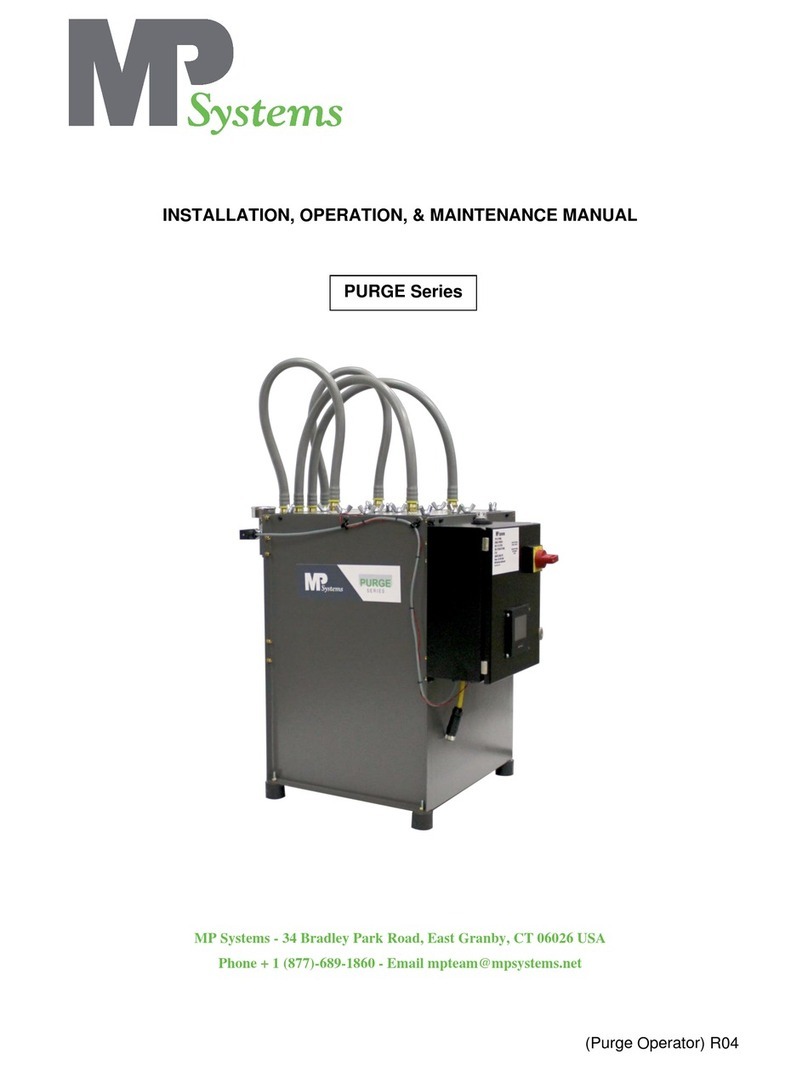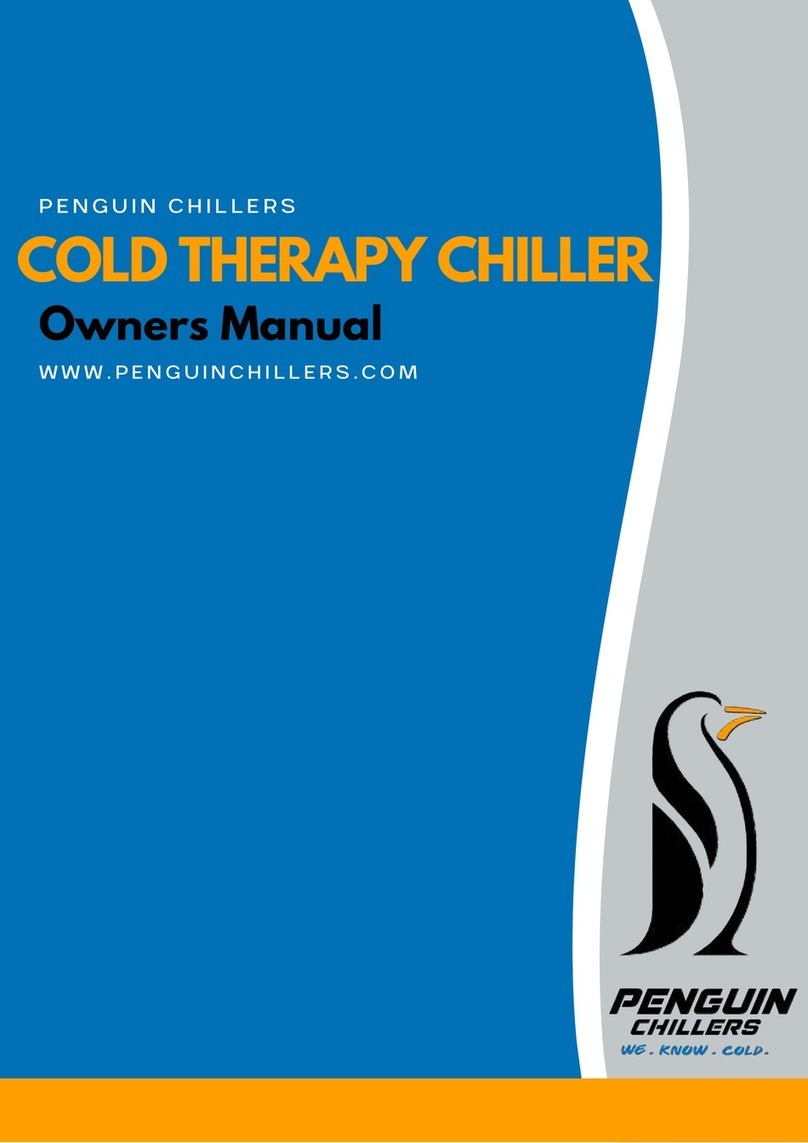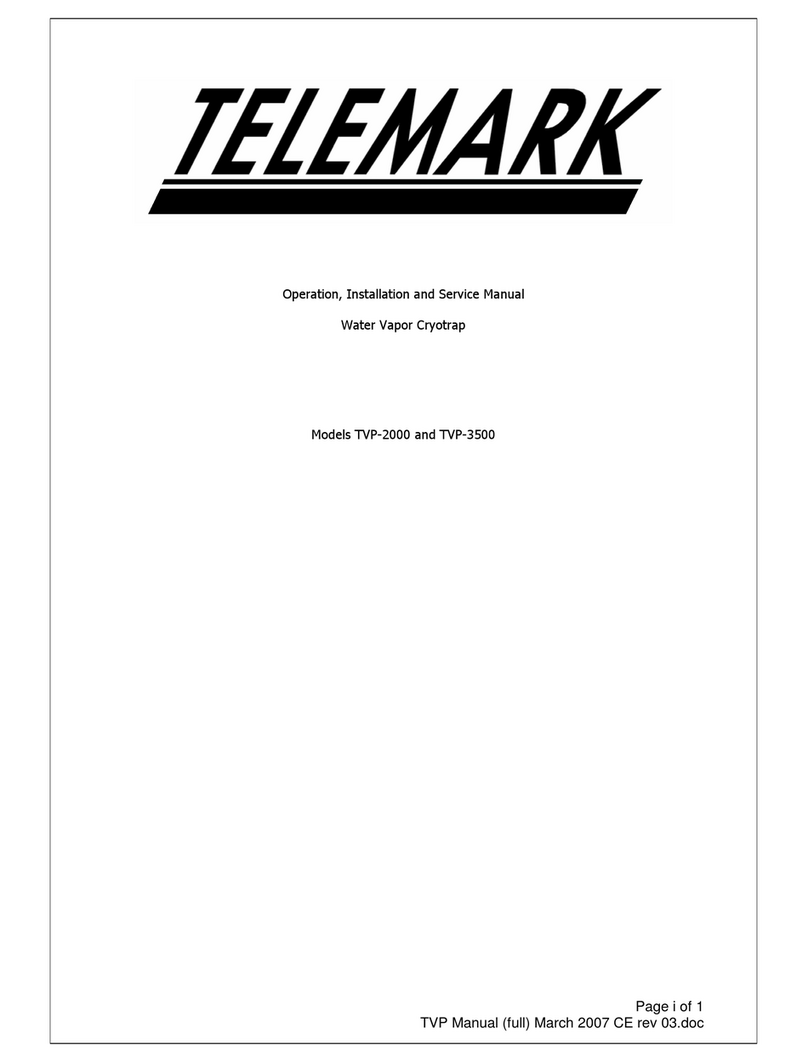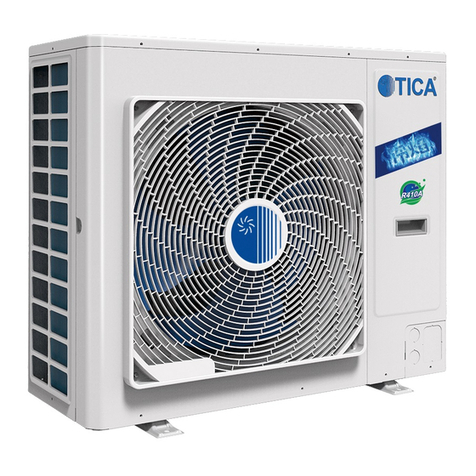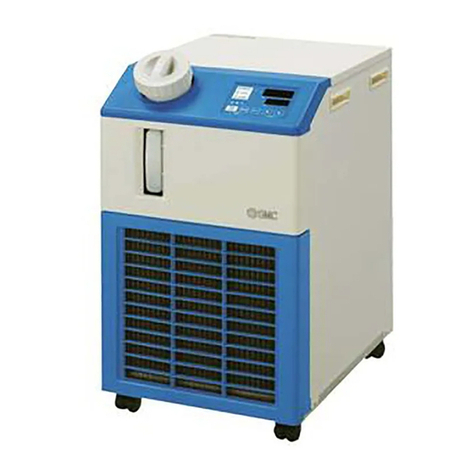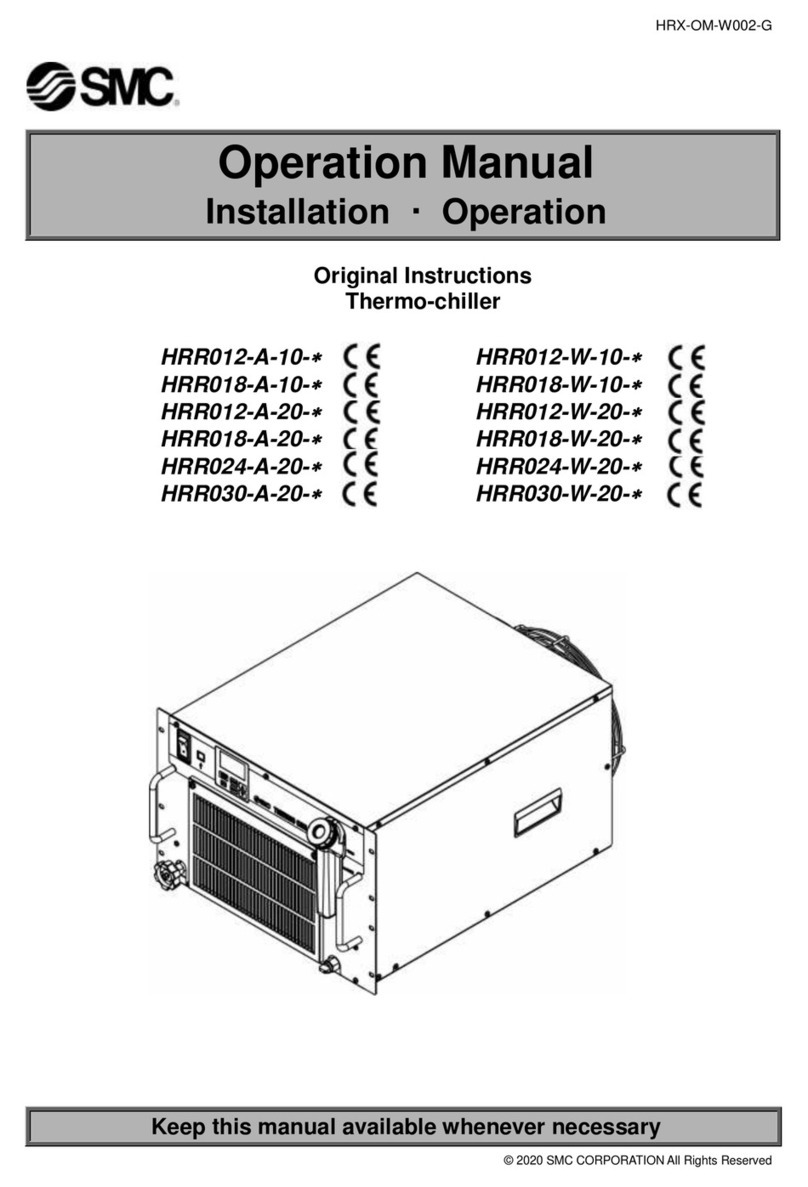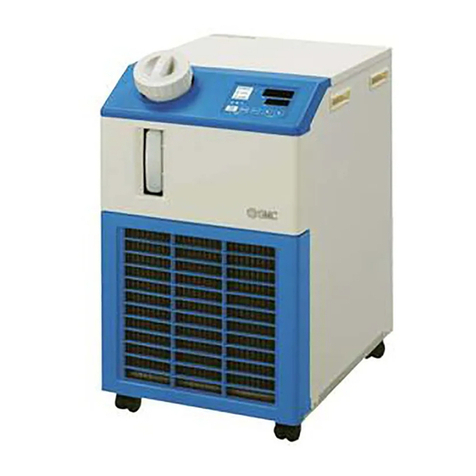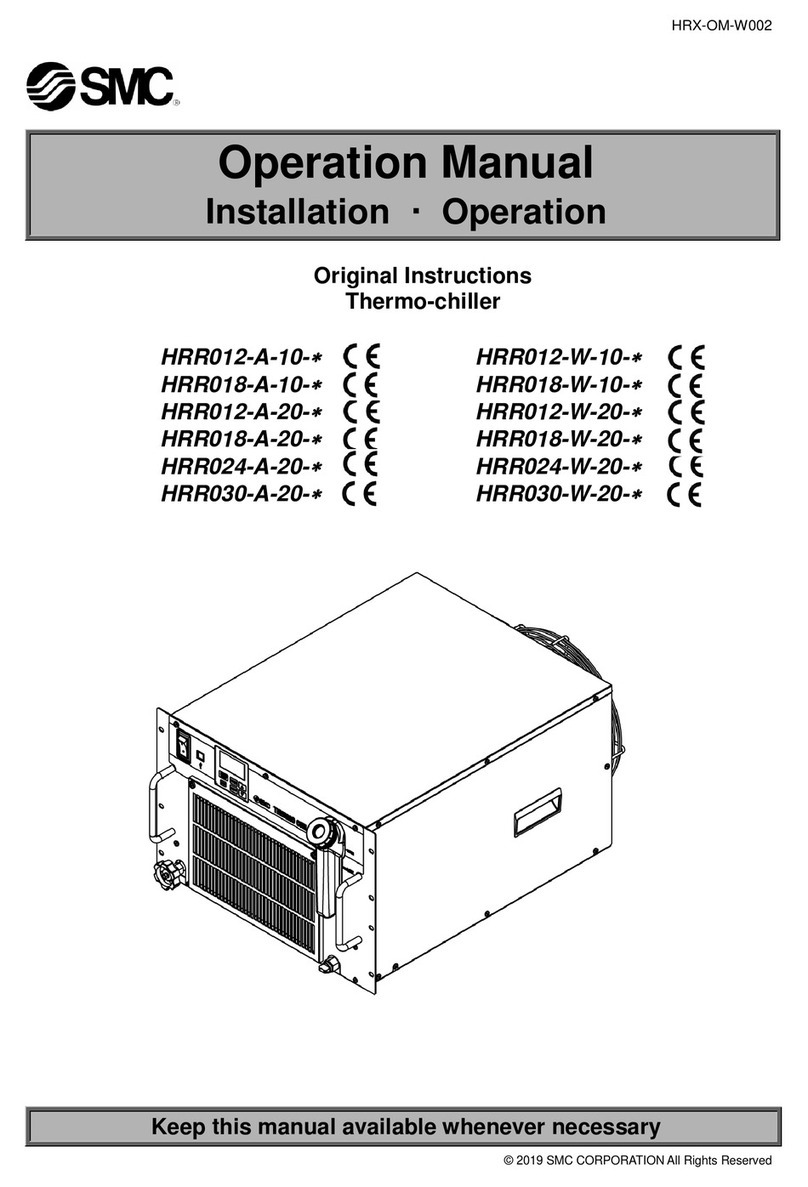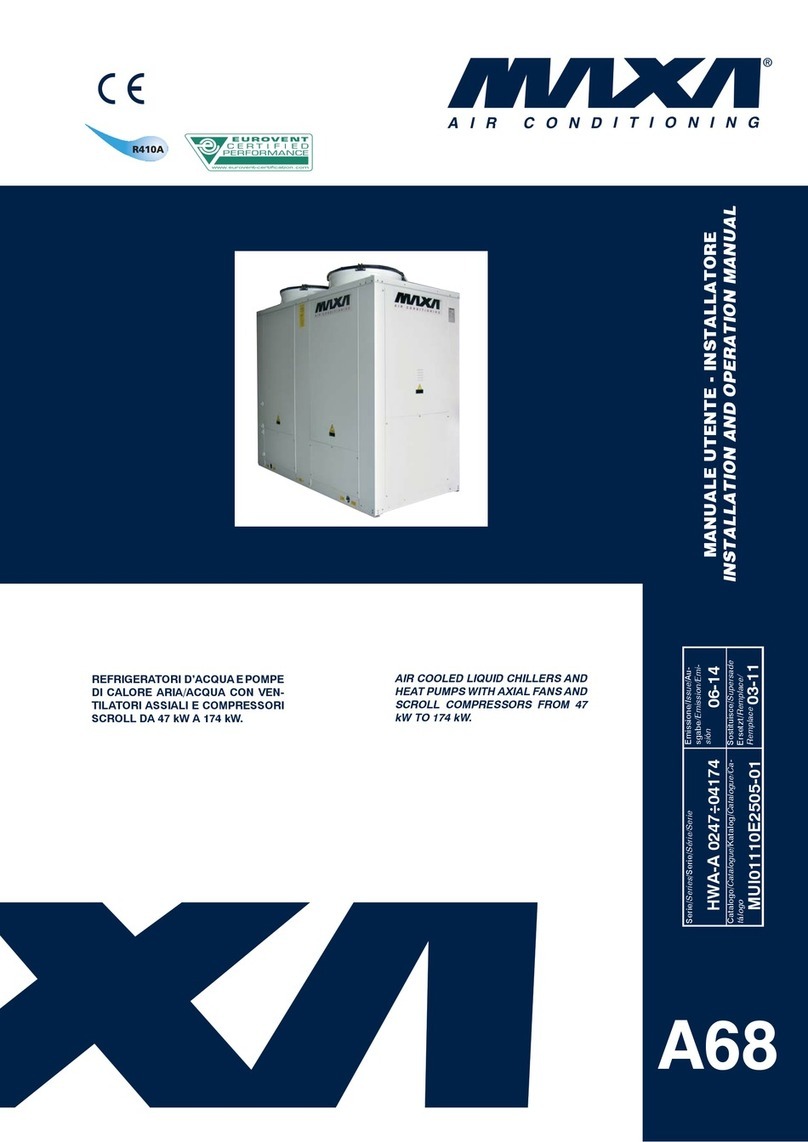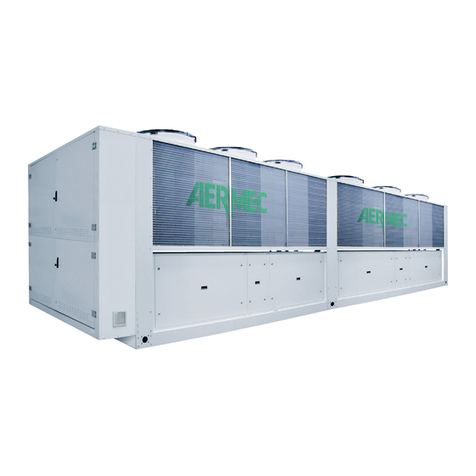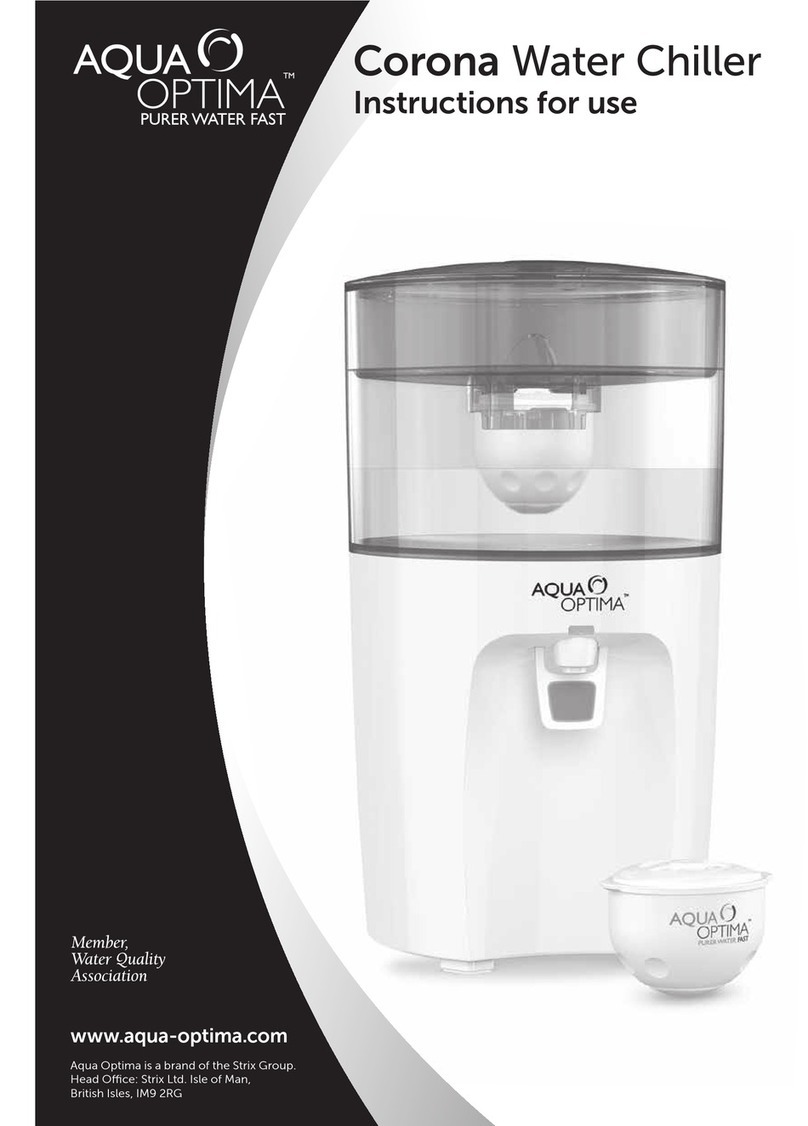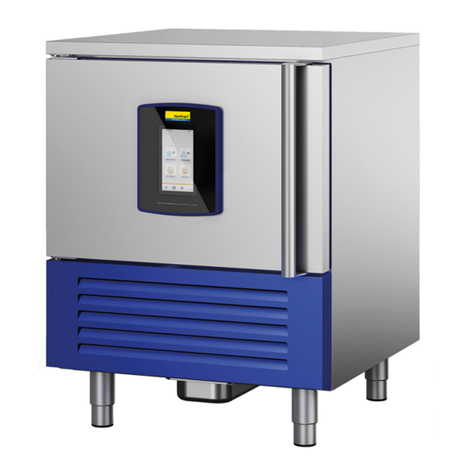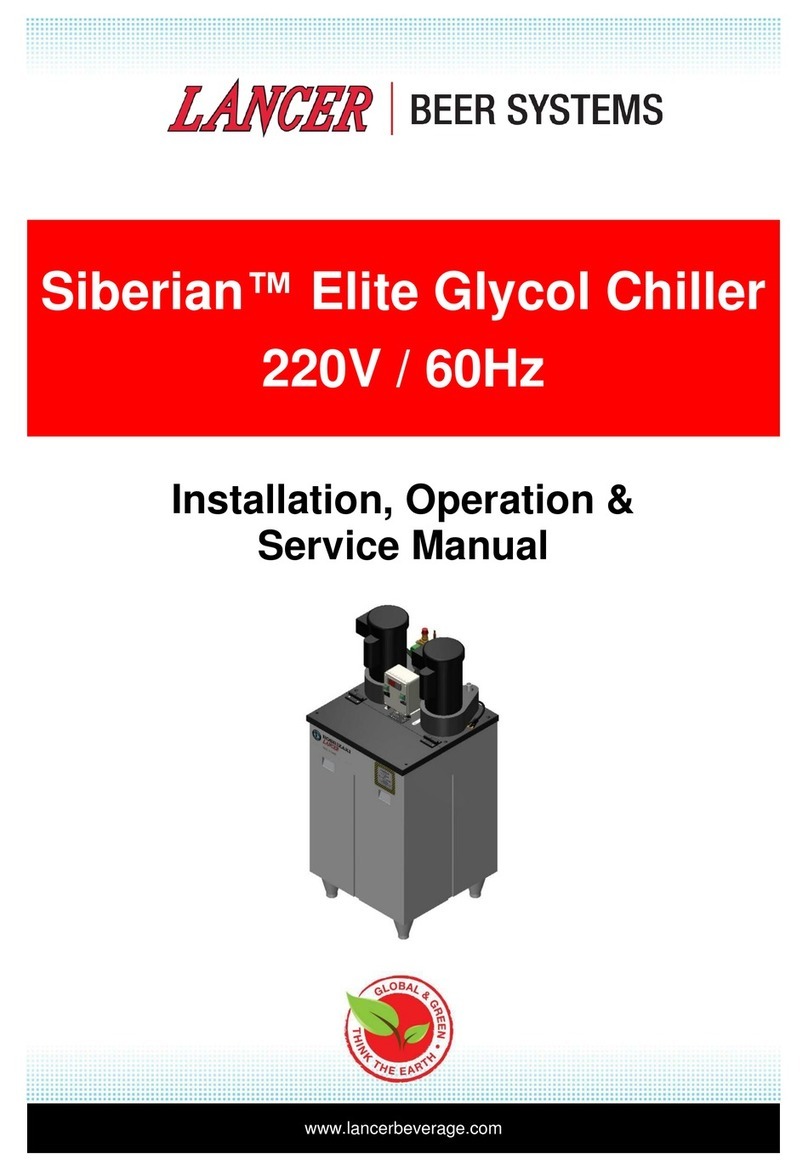4 Special Features
Auto tuning
This function sets the values necessary for the control system such as
PID (proportional band, integral time, derivative time and ratio of cooling/
heating gain) automatically.
If the controlled temperature fluctuates constantly after reaching the
target temperature, perform auto tuning. Controller calculates optimum
control PID and set automatically. Auto tuning may require time
depending on the conditions.
1) Select "2" in control operation.
2) Pressing [AT] key to light "AT" indicator and start auto tuning.
3) Pressing [AT] key stops auto tuning. (“AT” indicator turns off)
4) ”AT" indicator turns off when auto tuning is complete. If not completed
after 20min. [ERR19] (AT abnormal) occurs.
4 Special Features Continued
Offset function
This function controls the temperature slide by an offset value from set
point temperature. When the circulating fluid travels to the target object,
a certain deviation occurs between the temperature just before the
object and the set temperature of the product due to the influence of
ambient temperature on the piping. In this case, if the deviation is input
as the offset value, the temperature of the circulating fluid just before the
object can match with the setting value. Internal sensor value for the
alarm does not include the offset value. For example, if -0.15 °C is set
here, the actual reference temperature for control is lower than the
indicated SV by 0.15 °C. Internal sensor value for the alarm does not
include the offset value.
Learning control function
This function lets the product measure the temperature of circulating
fluid flowing before temperature target object by an external temperature
sensor and adjusts the offset function automatically to the set value at a
certain sampling interval. The external temperature sensor needs to be
prepared separately by the customer.
1) Install an external temperature sensor to the target object.
2) Select “3”in control operation.
3) Thermo-con controls the external sensor value to the set point.
4) When the temperature is not stable, then set the sampling interval
larger.
External tuning control function
This function makes the temperature of circulating fluid consistent to the
external (ambient) temperature all times. This function lets the product
measure the temperature from a temperature sensor mounted in the
customer preferred location, then it adjust the temperature of the fluid
automatically to the temperature detected by the sensor. The separate
temperature sensor needs to be prepared separately by the customer.
1) Install an external temperature sensor to the room.
2) Select “4”in control operation.
3) Thermo-con controls the fluidtemperature to the ambient temperature.
4) When the temperature is not stable, then set the sampling interval larger.
Temperature sensor fine control function
This is a function to finely control the measurement temperature of the
control sensor within the range of -9.99 to 9.99 °C separate from offset
function. Control sensor can be corrected by inputting difference
(calibration value) between temperature of standard and that of control
sensor. For example, if -0.15 °C is set here, the actual reference
temperature for control is lower than the indicated SV by 0.15 °C.
Internal sensor valuefor alarm = Internal sensor value–Fine control value
Setting value memory function
Even if the power is turned off the set values are saved and will be
restored at power on.
Upper / Lower temperature limit alarm function
This function raises an alarm when temperature of the circulating fluid is
out of allowable upper and lower range. When the alarm is raised, WRN is
indicated on LCD. If circulating fluid temperature returns to within allowable
upper/ lower range, this alarm is automatically cancelled. The allowable
upper and lower range of temperature can be set between 0.1 and 10 °C.
Output shut off alarm function
The product has a self-check function that can detect faults with the
product and interrupts the output to the thermo modules, stopping
operation (However, operation continues with ERR 15 and ERR 18). This
function gives an alarm if a critical error happens, the display shows ERR
and an alarm number. At the same time, the warning output connector
gives an output through a relay contact. This warning cannot be removed
unless the power is cycled. When the power is being cycled leave at least
3 seconds between turning the power off and turning the power back on.
5 Installation
5.1 Installation
Pay special attention to the safety of all personnel when installing and
transporting the product.
Do not install the product unless the safety instructions have been read
and understood.
The product is heavy, be careful when installing or moving the product.
Always transport the product using both handles.
5 Installation Continued
Leakage from the product may damage peripheral equipment. Install a
drain pan under the product to capture leakage. Furthermore, mount
devices like a leak sensor on the installed drain pan to detect leakage so
that it can alert operators around the area.
Install the product above 0.6m from the floor.
5.2 Environment
Do not use in an environment where the product is directly exposed to
water, oil, corrosive gases, chemicals, salt water or steam.
The product should be installed upright on a stable base.
Do not install the product in a location where the air inlet and air outlet
vents are blocked. Also do not use the product in a sealed enclosure.
Do not use in an explosive atmosphere.
Do not mount the product in a location where it can be exposed to
prolonged sunlight. Use a protective cover.
Do not mount the product in a location where it is subject to strong
vibrations and/or shock. Check the product specifications.
Do not use the product where it can be exposed to strong electrical or
magnetic emissions.
Do not mount the product in a location where it is exposed to noise
sources (such as discharging equipment, large relay and thyristor).
Do not mount the product in a location with an altitude of more than
1000 meters.
Do not mount the product where it is exposed to materials such as
silicone, which may generate harmful gas.
Install the product in a location where the ambient temperature range is
between 10 to 35°C and the relative humidity range is between 35 to
80%. No dew condensation is allowed on the unit.
Do not mount the product in a location exposed to radiant heat.
5.3 Mounting
When mounting the product to a cabinet, use a design which shall hold
the weight at the bottom. Ensure safety with transportation test if the
product is to be installed on a transportation device such as a trailer.
Mount the product using the fixing holes in the front of the product. Use
M5,M6 screws (bolts) or equivalent to the fix the product.
Be sure to correctly tighten all screws to the required torque.
(M5:3.0Nm, M6:5.2Nm)
5.4 Piping
Ensure that the power source and the power supply of the product is
turned off (or the power plug must come off )
Ensure the flow rate of the circulating fluid is as high as possible to
maintain the temperature stability. Therefore, the length of the external
piping should be minimized and internal diameter should be as large as
possible. Piping must have sufficient strength for the maximum
discharge pressure of thecirculating circuit.
Likewise, if a tube is bent or multiple elbow fittings are used, the piping
resistance will increase and the flow rate will decrease. If the flow rate
falls, the temperature stability will decrease.
If installing a tank externally, only a sealed tank should be used. Do not
use an open tank.
Ensure that the INLET and OUTLET for circulating fluid and facility water
are connected correctly. If any valves are used ensure that they do not
restrict the flow, otherwise low flow may cause an alarm.
When installing piping or fittings, ensure sealant material does not enter
inside the port. When using seal tape, leave 1.5 to 2 threads exposed on
the end of the pipe/fitting.
Be sure to correctly tighten the fitting fittings to the required torque
(Rc1/4:12 to 14 N・m, Rc3/8:15 to 20N・m).
5.5 Wiring
Ensure that the power source and the power supply of the product is turned
off before connecting the various connectors and power supply cable.
Supply disconnecting device according to IEC60974-1 and IEC60947-3
for the product must be provided in the end system.
Do not install the disconnecting device in the place where the operation
is difficult. And also the switch of the disconnecting device must comply
with the direction of the switch specified by IEC60447.
Preparation and wiring of power supply cable
5 Installation Continued
1) Strip the sheath from both ends of the cable.
2) Disassemble the power supply connector. Crimp one end of the cable
to L, N, E inside of the connector, then reassemble the power supply
connector.
3) Connect the other end of thecable to a plug or terminals
(e.g. crimped terminal).
Ensure that there is enough space between the power supply cable and
the communication cable of the product and power cables of other
equipment.
Ensure the power supply and ground connections aremade correctly.
Be sure to provide the grounding. The PE line of the power supply cable
is available for grounding. Do not connect the ground in common with
the ones for equipment that generates strong electromagnetic noise or
high frequency.
When an external temperature sensor is connected, connect the sensor
with a shield cable. Use a platinum resistant temperature sensor
(Pt100ohm, 3-wiring type, class A, 1mA).
Connect the host to this unit with a twisted pair shield cable when applying
communication function or external sensor and alarm output function.
When using the Communication connector and Signal/External temperature
sensor, connect the circuit separated from the mains circuit by reinforced
insulation.
Ensure that external instruments connecting to this product provide the
enclosure complied with UL61010-1 and use the cable which provide flame
resistance (over VW-1).
5.6 Preparation for facility water
When the flow rate of facility water is not specified range, acoustic noise
or vibration may be generated, or outlet of facility water become hot.
When the flow rate of the facility water is not enough, cooling capacity
will decline. Meanwhile, when the flow rate is extremely small, alarm
(ERR14) may occur and the temperature of the facility water might be
extremely high. If a resin tubing is used for piping under these
circumstances, the tubing might get softened and exploded. Therefore,
be sure to cool the facility water over time and flow the facility water with
a proper flow rate.
Keep the facility water temperature between 10 and 35°C. (No dew
condensation). Note that the cooling and heating capacity is changed
depending on facility water temperature. Also, if lower-temperature
facility water is supplied, dew may condense in the product and the
equipment could be damaged. Keep the temperature above the
atmospheric pressure dew point.
The maximum operating pressure is 0.5MPa. Keep the pressure as low
as possible to prevent water hammer.
5.7 Filling the product
1. Ensure that the power source and the power supply of the product is
turned off (or the power plug must come off).
2. Remove the reservoir cap.
(When setting the product again, confirmthelevelof fluiddoes not exceedthe “H”mark)
3. If using Ethylene Glycol, refer to the suppliers Material Safety Data Sheet
(MSDS) and wear Personal Protective Equipment (PPE) as appropriate.
4. Fill the circulating fluid into the reservoir. Stop filling once the level of
fluid reaches the “H” mark.
5. Turn on the power switch to fill the piping with the fluid.
6. When the piping is filled with the circulating fluid, the level of the
reservoir decreases and low fluid level alarm (ERR20) arises
accordingly. Then, turn off the power supply once again.
7. Repeat the step from 4 to 6 until ERR20 alarm doesn’t appear anymore.
8. Then, replace the cap on the reservoir and tighten it securely.
9. Keep the fluid level between H and L of the level indicator.
